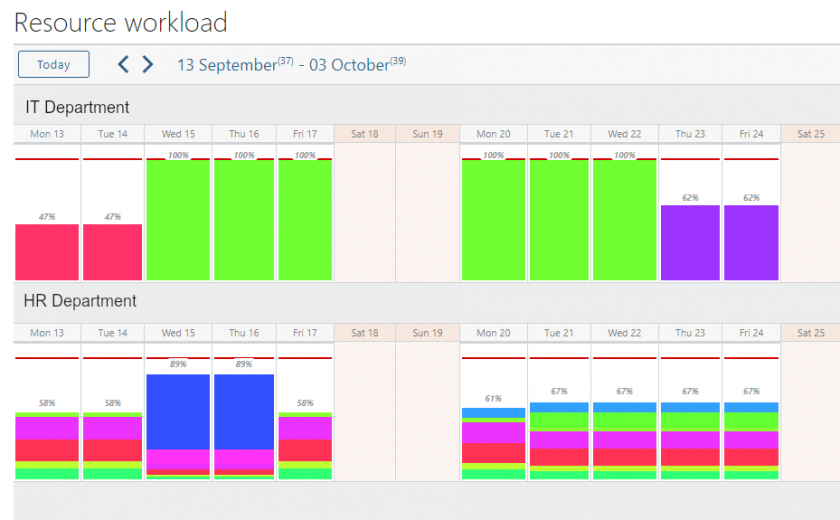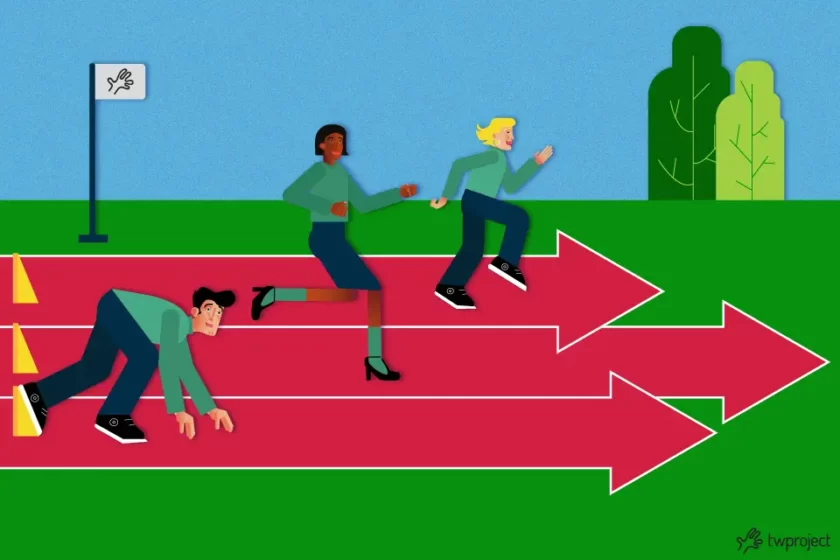Performance management is not just some fancy business buzzword, but an essential tool for any project manager.
Project management requires organizational skills as well as the ability to optimize team performance and ensure that objectives are met.
This is where performance management comes into play. This approach allows project managers to continuously monitor, analyze, and improve their teams’ results.
But what is performance management, and how can it be effectively applied to project management?
CONTENT
What is performance management?
Performance management is a business process that focuses on managing individual and team performance to align with business goals and strategic objectives.
It is a methodology for evaluating team activities, identifying areas for improvement, and providing regular feedback to project members.
A well-structured performance management system not only helps evaluate performance but also creates a positive, continuous improvement-oriented work environment.
Let’s examine 5 key techniques that every project manager should master to improve the quality of their work.
Technique 1: clear goal setting
Setting objectives is the first step towards effective performance management. Objectives must be specific, measurable, realistic, and time-bound (SMART).
- Specific: What exactly do you want to achieve? Instead of saying “improve my website,” it is better to say “reduce page loading times by 20%.”
- Measurable: How do you measure success? If you can’t measure it, you can’t manage it. KPIs (Key Performance Indicators) are your ally.
- Achievable: Is your goal realistic for your team and available resources? A goal that is too ambitious can be demotivating, while one that is too simple does not stimulate growth.
- Relevant: Is your goal aligned with your company’s strategy and project objectives?
- Time-bound: When does your goal need to be achieved? Having a clear deadline is critical.
A project manager must ensure that project objectives are aligned with the company culture and directly support the overall business goals. For example, a SMART goal in an event planning project might be “Get 300 participants by the event date, increasing participant satisfaction by 15% over the previous event.” This links employee performance to growth and reputation goals.
Technique 2: critical path analysis and constant monitoring
Managing project performance is closely linked to time. Critical path analysis is a crucial technique that identifies the sequence of activities that, if delayed, will cause a delay in the entire project. These tasks constitute the “critical path.”
By constantly monitoring the activities on this path, you can direct your resources and focus where they are most needed. An effective performance management system involves continuously monitoring the team’s progress to assess real-time performance.
Understanding dependencies and available time margins allows you to make informed decisions to prevent delays and keep your project on track.
Tools such as Twproject offer vital support in this process. With real-time statistics, customizable dashboards, and alerts on overdue tasks, overloaded teams, and activity delays, you can quickly address any critical issues.

This makes critical path analysis a dynamic and manageable tool that allows you to ensure that project objectives are achieved proactively and data-drivenly.
Technique 3: provide constructive feedback
Providing regular feedback is key to keeping your team motivated and productive. Targeted feedback helps project members understand how to improve their performance, encouraging a continuous improvement mindset.
You can correct the course in real time by providing regular feedback, reinforcing positive behaviors and quickly addressing issues.
In a marketing project, for example, you may notice that one advertising campaign performed better than others because someone came up with an outside-the-box idea. Instead of waiting until the end of the quarter to mention it, you acknowledge it immediately, share it with your team, and encourage everyone to take inspiration from it.
With Twproject, you can do this directly in the task comments or message boards, making the feedback visible to your entire team.
Technique 4: create a collaborative work environment
Creating a positive and collaborative work environment promotes communication and trust within your team. A healthy corporate climate facilitates performance management and allows you to tackle challenges as a cohesive unit, strengthening your corporate culture and improving the overall well-being of your employees.
Technique 5: align performance with strategic objectives
You can’t rely on gut feelings to know if your project is running smoothly.
Key Performance Indicators (KPIs) are performance metrics that provide guidance. They give you clear, tangible data on whether you are on track to achieve your goals or if you need to adjust your course. The right KPIs depend on your project, but they usually focus on:
- Efficiency: How fast are you? (E.g., percentage of tasks completed, time spent on a task).
- Quality: How good is your work? (E.g., number of bugs, customer feedback).
- Finance: Are you within budget? (E.g., difference between planned costs and actual costs).

However, simple measurement is not enough. The real step forward is to link each person’s performance to the strategic objectives of the project and the entire organization. This ensures that every effort is not wasted but contributes to a larger result.
Imagine a company that wants to cut waste by 10% in six months. If the supply management team doesn’t know that their work directly impacts this goal, they might not prioritize certain activities.
This is where tools like Twproject make a difference. They help you gather and analyze data for your KPIs, showing you everything in real-time dashboards, and also allow you to link each department’s indicators to overall goals. This way, all team members can clearly see how their contribution affects the outcome, working with greater awareness and motivation.
Implementing these five techniques, from setting clear goals to constant monitoring with the help of project management tools such as Twproject, can help you transition from reactive to proactive management.
As we have seen, an effective approach to performance management isn’t just about evaluation, but also promotes a mindset of continuous improvement. Implementing these techniques allows project managers to turn performance management into a strategic tool for optimizing performance, leveraging team strengths, and ensuring project success in line with business goals.




